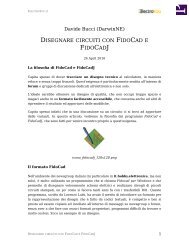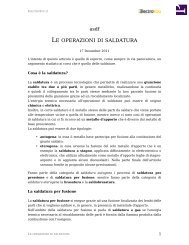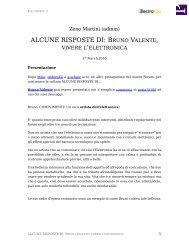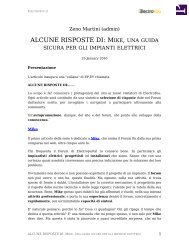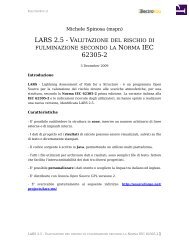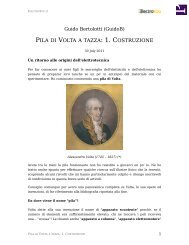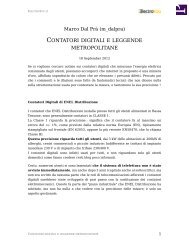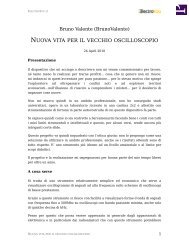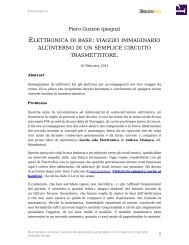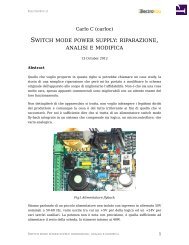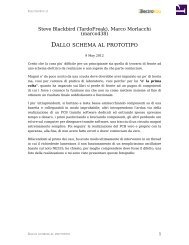ALIMENTAZIONE DEI CIRCUITI SPERIMENTALI - ElectroYou
ALIMENTAZIONE DEI CIRCUITI SPERIMENTALI - ElectroYou
ALIMENTAZIONE DEI CIRCUITI SPERIMENTALI - ElectroYou
You also want an ePaper? Increase the reach of your titles
YUMPU automatically turns print PDFs into web optimized ePapers that Google loves.
ELECTROYOU.IT MARCO MORLACCHI (MARCO438)<br />
Ad evitare questo problema, si ricorre spesso all'adozione di due trasformatori (<br />
o un trasformatore doppia uscita) onde ottenere due distinte tensioni d'ingresso<br />
(commutabili manualmente o elettronicamente) una per le tensioni basse, l'altra per<br />
quelle alte. Semplificando, se vogliamo ottenere in uscita 1.25/24V, sceglieremo un<br />
trasformature da 15+15V ; useremo un'uscita per regolare da 1.25 a 12V e le due<br />
uscite in serie (30V totali) per le alte tensiioni.<br />
Lo schema di massima di un alimentatore con questo integrato e rappresentato in<br />
figura.<br />
Abbiamo gia' esaminato a grandi linee tutti i componenti che ne fanno parte tranne<br />
le resistenze di regolazione ed i due diodi.<br />
Le due resistenze indicate come R1 ed R2 sono preposte alla regolazione della<br />
tensione in uscita. Dai loro valori dipende anche la massima tensione ottenibile.<br />
Se prendiamo in esame un variabile da 1.2 a 30V, stabiliamo di voler ottenere<br />
questa tensione massima e scegliamo per R1 il valore standard di 220 ohm dovremo<br />
effettuare il seguente calcolo:<br />
[(Vout:1.25) − 1]x220<br />
quindi: 30:1.25 = 24<br />
24 − 1 = 23<br />
23x220 = 5060<br />
317 simplex<br />
<strong>ALIMENTAZIONE</strong> <strong>DEI</strong> <strong>CIRCUITI</strong> <strong>SPERIMENTALI</strong> 17



